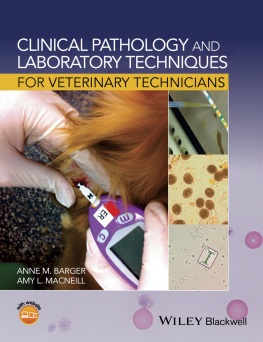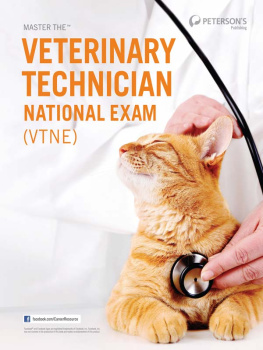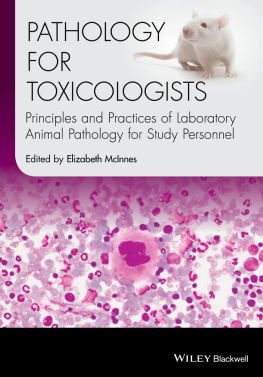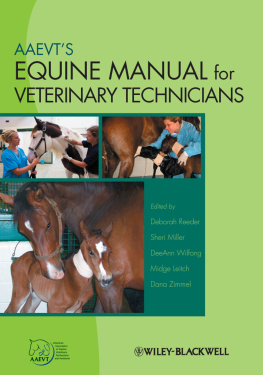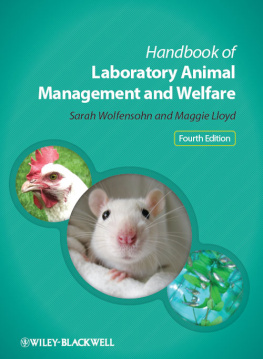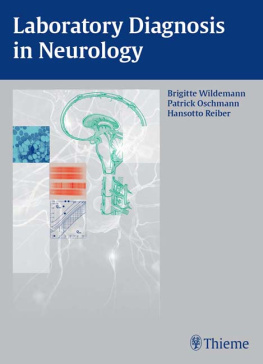
This edition first published 2015 2015 by John Wiley & Sons, Inc
Editorial offices: 1606 Golden Aspen Drive, Suites 103 and 104, Ames, Iowa 50010, USA
The Atrium, Southern Gate, Chichester, West Sussex, PO19 8SQ, UK
9600 Garsington Road, Oxford, OX4 2DQ, UK
For details of our global editorial offices, for customer services and for information about how to apply for permission to reuse the copyright material in this book please see our website at www.wiley.com/wiley-blackwell.
Authorization to photocopy items for internal or personal use, or the internal or personal use of specific clients, is granted by Blackwell Publishing, provided that the base fee is paid directly to the Copyright Clearance Center, 222 Rosewood Drive, Danvers, MA 01923. For those organizations that have been granted a photocopy license by CCC, a separate system of payments has been arranged. The fee codes for users of the Transactional Reporting Service are ISBN-13: 978-1-1183-4509-2/2015.
Designations used by companies to distinguish their products are often claimed as trademarks. All brand names and product names used in this book are trade names, service marks, trademarks or registered trademarks of their respective owners. The publisher is not associated with any product or vendor mentioned in this book.
The contents of this work are intended to further general scientific research, understanding, and discussion only and are not intended and should not be relied upon as recommending or promoting a specific method, diagnosis, or treatment by health science practitioners for any particular patient. The publisher and the author make no representations or warranties with respect to the accuracy or completeness of the contents of this work and specifically disclaim all warranties, including without limitation any implied warranties of fitness for a particular purpose. In view of ongoing research, equipment modifications, changes in governmental regulations, and the constant flow of information relating to the use of medicines, equipment, and devices, the reader is urged to review and evaluate the information provided in the package insert or instructions for each medicine, equipment, or device for, among other things, any changes in the instructions or indication of usage and for added warnings and precautions. Readers should consult with a specialist where appropriate. The fact that an organization or Website is referred to in this work as a citation and/or a potential source of further information does not mean that the author or the publisher endorses the information the organization or Website may provide or recommendations it may make. Further, readers should be aware that Internet Websites listed in this work may have changed or disappeared between when this work was written and when it is read. No warranty may be created or extended by any promotional statements for this work. Neither the publisher nor the author shall be liable for any damages arising herefrom.
Library of Congress Cataloging-in-Publication Data
Clinical pathology and laboratory techniques for veterinary technicians / edited by Anne M. Barger and Amy L. MacNeill.
p. ; cm.
Includes bibliographical references and index.
ISBN 978-1-118-34509-2 (paperback)
1. Veterinary clinical pathology. I. Barger, Anne M., editor. II. MacNeill, Amy L., editor.
[DNLM: 1. Clinical Laboratory Techniquesveterinary. 2. Animal Technicians. 3. Pathology, Clinicalmethods. 4. Pathology, Veterinarymethods. SF 772.6]
SF772.6.C55 2015
636.089607dc23
2015006610
A catalogue record for this book is available from the British Library.
Wiley also publishes its books in a variety of electronic formats. Some content that appears in print may not be available in electronic books.
Amy MacNeill Dedication:
This book is dedicated to Dr. Bruce Ferguson, who taught me many of the techniques in this text and nourished my love of veterinary medicine.
Anne Barger Dedication:
I would to thank my partner in life Dr. Patty McElroy and my father Maurice Barger for their continued love and support.
List of Contributors
- Anne M. Barger
- University of Illinois, Champaign, IL, USA
- Bente Flatland
- University of Tennessee, Knoxville, TN, USA
- Amy L. MacNeill
- Colorado State University, Fort Collins, CO, USA
- Allan J. Paul
- University of Illinois, Champaign, IL, USA
- Amelia G. White
- Auburn University, Auburn, AL, USA
Preface
The objective of this text is to provide a thorough, practical guide to clinical pathology. It is directed toward veterinary technician students, veterinary technicians in practice, and veterinarians in general practice. Included in this text are learning objectives for students and educators, many high-quality images of techniques, instrumentation, microscopic cells, organisms, and patients. Each chapter contains cases meant to allow the student to understand the practical application of the material.
About the Companion Website
This book is accompanied by a companion website:
www.wiley.com/go/barger/vettechclinpath
The website includes:
- Instructor questions
- Answers to the Multiple Choice Questions that are in the book
- Powerpoints of all figures from the book for downloading
The password for the site is the last word in the caption for .
Chapter
Getting Started with Clinical Pathology
Amy L. MacNeill
Colorado State University, Fort Collins, CO, USA
Learning Objectives
- Become familiar with the equipment used to perform clinical pathology testing.
- Understand when to use different types of blood collection tubes.
- Know the sample types needed for clinical pathology tests.
- Be able to process and store samples for clinical pathology tests.
- Follow basic laboratory safety procedures.
Key Terms
- Clinical pathology
- Laboratory
- Equipment
- Supplies
- Maintenance
- Safety
Case example 1
A feline blood sample was collected into a blood tube containing EDTA, but the amount of blood in the tube was below the volume indicator on the side of the tube. The veterinary technician loaded the appropriate amount of the sample into the automated hematology analyzer. Results indicated that the cat had low erythrocyte and platelet counts. The technician recorded that the tube was underfilled before the results were reported. Why is it critical that the technician recorded the fact that the sample was underfilled?
Case example 2
A glass slide with dried blood on it was dropped on the floor and shattered. The animal caretaker saw the mess and began to pick up the pieces of glass with her bare hands. What should you do?
Introduction
Clinical pathology evaluates disease in animals using laboratory data collected during analysis of blood, urine, body fluids, and tissue aspirates. Laboratory data sets collected in sick animals typically include hematology data, serum or plasma chemistry concentrations, urinalysis results, and cytology interpretations. This chapter introduces the equipment used to collect accurate laboratory data.
Standard Equipment
- A. Microscope.
A well-maintained and properly aligned microscope is an important tool for analysis of blood smears, fecal samples, and urine sediment samples. This is an expensive tool that requires proper training to maximize the full potential use of the instrument.

